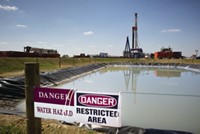Advertisement
Grab your lab coat. Let's get started
Welcome!
Welcome!
Create an account below to get 6 C&EN articles per month, receive newsletters and more - all free.
It seems this is your first time logging in online. Please enter the following information to continue.
As an ACS member you automatically get access to this site. All we need is few more details to create your reading experience.
Not you? Sign in with a different account.
Not you? Sign in with a different account.
ERROR 1
ERROR 1
ERROR 2
ERROR 2
ERROR 2
ERROR 2
ERROR 2
Password and Confirm password must match.
If you have an ACS member number, please enter it here so we can link this account to your membership. (optional)
ERROR 2
ACS values your privacy. By submitting your information, you are gaining access to C&EN and subscribing to our weekly newsletter. We use the information you provide to make your reading experience better, and we will never sell your data to third party members.
Environment
Potable Water through Reuse
March 24, 2008
| A version of this story appeared in
Volume 86, Issue 12
I was delighted to read Jyllian Kemsley's "Treating Sewage for Drinking Water," which details the direct water reuse treatment schematic at the Orange County Water District's Advanced Water Purification Facility (AWPF), which is slated to treat 70 million gal per day (C&EN, Jan. 28, page 71). This facility essentially treats municipal wastewater to drinking water standards; subsequently, the treated effluent is injected back into the groundwater table.
As an environmental engineer, I applaud C&EN's efforts to instigate discussion of water-reuse-related issues. The importance of this subject can be attributed to extensive drought conditions across the southeastern and southwestern U.S., decreased freshwater supplies resulting from global warming, and increased presence of trace organics, including pharmaceuticals and personal care products, in natural waters.
That being said, the description of the AWPF treatment schematic seems to be incomplete. After undergoing typical wastewater treatment processes, the secondary effluent is pumped to AWPF, where chlorination and chloramination occurs. Subsequent to chlorination, the reclaimed wastewater passes through microfiltration filters and later encounters a reverse-osmosis system. My question is: How can a reverse-osmosis system handle 70 million gal/day of chlorinated and chloraminated water? If that quantity of chlorinated and chloraminated water came into contact with reverse-osmosis membranes, membrane oxidation would rapidly occur and treatment efficiency would quickly drop. For that reason, I believe C&EN's synopsis of the treatment schematics is missing an important feature.
Many reverse-osmosis plants are designed to split the flow between a chlorination stream and a reverse-osmosis stream; later, these two separate streams are mixed, creating a high-purity effluent with chlorine residual. Another option involves incorporating cartridge filters (typically, carbon-based media) prior to reverse-osmosis treatment. Because a hydrogen peroxide/ultraviolet oxidation system follows reverse-osmosis separation and the ultimate effluent from AWPF is injected into the groundwater table, I imagine that cartridge filters are present at this facility.
As water reuse applications become increasingly popular, it's important to provide full treatment schematics to demonstrate process feasibility, sustainability, and superiority.
Lee Blaney
Austin, Texas





Join the conversation
Contact the reporter
Submit a Letter to the Editor for publication
Engage with us on Twitter